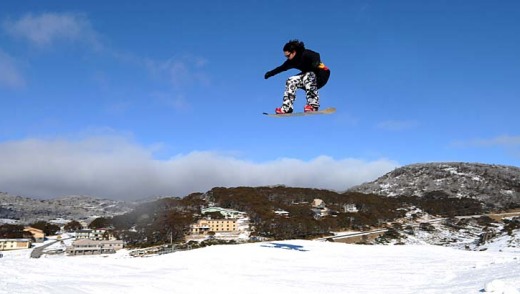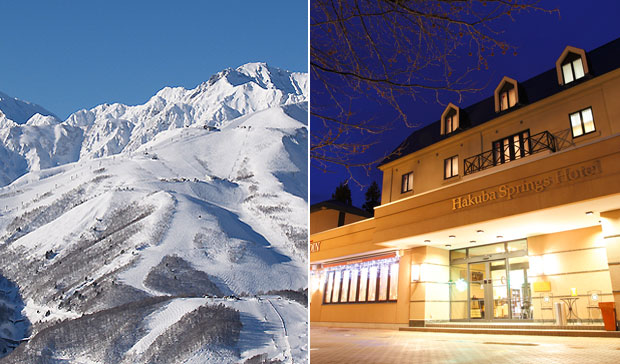The ski and snowboard world is a tight-knit community. When someone is badly injured or loses their life on the slopes, chances are you have shared a lift line with them, have met them at a bar, know them personally or are related to them.
Deaths at the snow in beach-obsessed Australia hits deep - and there have been a few already this season. A season that has been heralded for big powder storms and some of the best conditions in over a decade - conditions few of us are used to so accidents are bound to happen.
Excitement has been contagious and a fervor to be the first to get the most of each storm has infected already over-excited skiers and boarders who have attempted terrain outside of their skill level, ducked under closed ropes or hit the side and back country without appropriate equipment or knowledge.

Skier Mike Grace and snowboarder Nick Bennett, both from Sydney, were lucky to survive when they triggered an in-resort avalanche at Thredbo in late June this year, after ducking under closed ropes into ‘Hipcheck’, a run that took the life of a young male skier in 1998. Grace was buried under metres of snow for over an hour and only survived thanks to a freak air pocket and the skills of Thredbo Ski Patrol.
But avalanches don’t happen in Australia, right? Wrong. They do and they occur regularly in the backcountry, especially after large dumps of snow. A 22-year-old-skier died in an avalanche triggered by a fractured cornice at Blue Lake in the Snowy region in 2008.
Social media has been filled with skiers and boarders snapping pics of slides they have triggered in places they shouldn’t be this season. But there’s nothing cool about setting off a slide, nothing, unless you are deliberately cutting a slope in an effort to reduce avalanche risk.
Even those who have the experience, equipment and knowledge have found themselves, sadly, in trouble. Experienced backcountry boarders Martin Buckland and Daniel Kerr died in a backcountry avalanche on Mount Bogong not far from their camp in mid-July.
Heavy snow - which June and July had lots of - can kill in insidious ways and you don't have to be on skis or on a snowboard. The death of a child hits to the very core and left a family devastated at Mount Buller early in the season. A mammoth snow fall turned roof tops into ticking time snow bombs that fell upon seven-year-old Haadi Akhtar who was playing nearby. There are no words.
In Thredbo, more recently, we heard the chopper blades before we saw them, the ominous sound of whirring air that signals the change in someone’s life circumstance. Helicopters only land in New South Wales ski fields for one reason - to rescue.
I knew the chopper would be for the out-of-control snowboarder without a helmet that had run into a tree a mere ninety minutes prior, attended to by an off-duty patroller who was part of our skiing crew. She held his hand while he regained consciousness and struggled to remember his name, as ski patrol made their way to his aid.
Witnesses said he was out-of-control, out-of-his-depth, without a helmet, and his mates who were better boarders than him, had naturally ridden ahead, unaware of what was left behind. There are no winners in this story (or any of these stories), just devastated mates worried about the state of their buddy as he was intubated and airlifted to Canberra hospital. A snow trip gone horribly wrong.
It begs the question, why aren't helmets mandatory and what of the Alpine Responsibility Code? How many of the ten parts of the code do you honestly know or will stick to, including 'taking lessons from professional instructors to learn or progress', 'keep off closed trails', 'always stay in control' and not being under the influence of alcohol on a mountain that sells it come lunch time.
Surely both the code and basic avalanche knowledge should be taught in ski school, maybe even tested in order to gain lift access and definitely clearly signed throughout the mountains of Australia. Should we go as far as gates to the backcountry that are only open when you have a detected transceiver and no helmet no chairlift ride?
New Zealand are more used to avalanches and have thankfully been luckier this year when it comes to deaths at the ski fields, but only due to the lack of snow. This may all be about to change as snow storms this past week have heralded the final and late arrival of winter. Treble Cone received over 1.6 metres in the past seven days. That's a lot of snow.
So it is time to be extra alert across the ditch. The avalanche centre of New Zealand (Australia doesn’t have one but should for education purposes alone) lists the Queenstown region as on a red high avalanche alert.
Yet this didn’t stop more social media snaps of people hitting the unpatrolled out of bounds back bowls of Coronet Peak without avalanche gear. The same slopes that took the life of a thirty-year-old man in 2009.
When will we learn, or more importantly when will we be taught?
Do you think the Alpine Responsibility Code should be mandatory teaching in ski school? Have you been caught in avalanche conditions in Australia and survived a slide?
INSTAGRAM COMPETITION
We are so excited about our #misssnowitall Instagram competition this year and with a trip to Japan up for grabs who wouldn't be? Did your instagram make our gallery this week?
Thanks to the Japan experts at Liquid Snow Tours and Hakuba Hotel Group we have a trip for two to Hakuba in Japan flying direct with Jetstar from Sydney, Brisbane or Melbourne with seven nights at the conveniently located Hakuba Springs Hotel, daily breakfast, five of nine day multi-resort lift passes for the Hakuba Valley, welcome drinks, transfers, in resort assistance and concierge service. Now that's how you do Hakuba in style.

To enter just tag your winter inspired Instagrams with #misssnowitall.
We will choose five finalists each week for our gallery above, and come September, our guest judge will choose our finalists from the gallery and you get to judge the ultimate winner of this fantastic week in Japan. Click here for full terms and conditions.
Email Miss Snow It All [email protected]